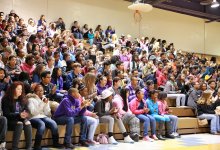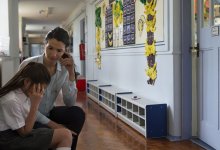Restorative Practices
Educators across the country are replacing punitive discipline with a restorative approach, resulting in fewer suspensions and expulsions. Learn how educators make these practices successful in their classrooms and schools.
A Look at Strength-Based Tier 2 Interventions
These remediation strategies for middle and high school students accentuate the positive and emphasize skill building.6kYour content has been saved!
Go to My Saved Content.When the Teacher-Student Relationship Breaks Down
These strategies will help teachers reset boundaries and repair relationships if classroom dynamics have become dysfunctional.Weekly Circles for Students and Faculty
See what happens when students and faculty participate in regular meetings to build trust and promote deeper learning.400.6kYour content has been saved!
Go to My Saved Content.An Administrator’s Strategy for Calming Disruptive Students so They Can Stay in Class
When an administrator is called in to deal with a disruptive student, the situation is serious. This is a model for helping the student calm down so they can remain in class.156.6kYour content has been saved!
Go to My Saved Content.A Restorative Alternative to Out-of-School Suspensions
This strategy focuses on helping the student stay part of the school community through tutoring, counseling, and community service.23.8kYour content has been saved!
Go to My Saved Content.Restorative Justice: Resources for Schools
Explore resources and case studies that demonstrate how to bring restorative justice to your school or classroom.341.1kYour content has been saved!
Go to My Saved Content.Building Community With Restorative Circles
A technique for proactively building the skills and relationships students will need when challenges arise.227.6kYour content has been saved!
Go to My Saved Content.An Alternative to In-School Suspension
In lieu of a more punitive approach, students use restorative practices to resolve conflicts and reflect on their behaviors.222kYour content has been saved!
Go to My Saved Content.3 Alternatives to Assigning Detention
Developing relationships with students to help them make positive choices requires planning and patience, but the work pays off.109.6kYour content has been saved!
Go to My Saved Content.Why Restorative Practices Benefit All Students
Punitive discipline can be harmful and unfair—restorative practices offer hopeful solutions.245.6kYour content has been saved!
Go to My Saved Content.Justice Committee: Using Restorative Practices to Resolve Conflicts
Students at Pittsfield Middle High School are trained to mediate conflicts between their fellow students—and between students and teachers.218.9kYour content has been saved!
Go to My Saved Content.A Relationship-Driven Strategy for Addressing Challenging Behavior
Putting relationships first can yield positive results in student success.80.5kYour content has been saved!
Go to My Saved Content.A Proactive Approach to Discipline
Restorative discipline seeks to create an environment in which problem behavior is less likely to occur.146.8kYour content has been saved!
Go to My Saved Content.Using Restorative Justice to Transform School Culture
When restorative justice is implemented on a schoolwide level, it has the potential to transform relationships between teachers and students.68.2kYour content has been saved!
Go to My Saved Content.Using Restorative Practices in Preschool
Rather than rely on external rewards or punishment, these classroom management strategies focus on building community.8.5kYour content has been saved!
Go to My Saved Content.













